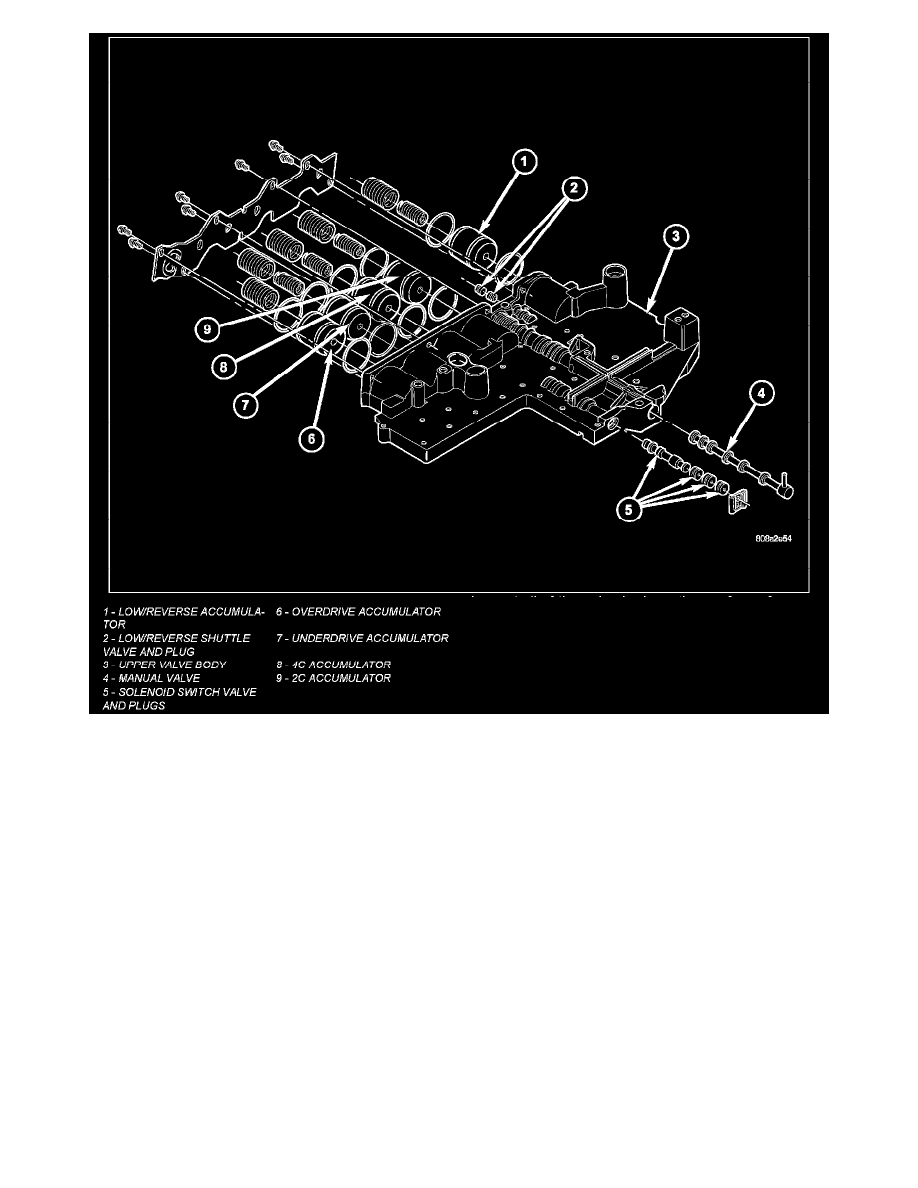Raider 2WD V6-3.7L (2008)

NOTE: Only the INNER accumulator seal ring actually seals the pressure in the bore. The outer seal ring only serves to guide the piston in the bore.
Gouges which do not extend past the inner seal ring (and have no raised edges, which could damage the guide ring) are acceptable. The machined
accumulator bores often have a tiger-striped appearance. This is NORMAL and does NOT require replacement, as long as the bores are smooth in the
inner seal ring area.
Inspect all of the valve body mating surfaces for scratches, nicks, burrs, or distortion. Use a straightedge to check surface flatness. Minor scratches
may be removed with crocus cloth using only very light pressure.
Minor distortion of a valve body mating surface may be corrected by smoothing the surface with a sheet of crocus cloth. Position the crocus cloth on a
surface plate, sheet of plate glass or equally flat surface. If distortion is severe or any surfaces are heavily scored, the valve body will have to be
replaced.
Inspect the valves and plugs for scratches, burrs, nicks, or scores. Minor surface scratches on steel valves and plugs can be removed with crocus cloth
but do not round off the edges of the valve or plug lands. Maintaining sharpness of these edges is vitally important. The edges prevent foreign matter
from lodging between the valves and plugs and the bore.
